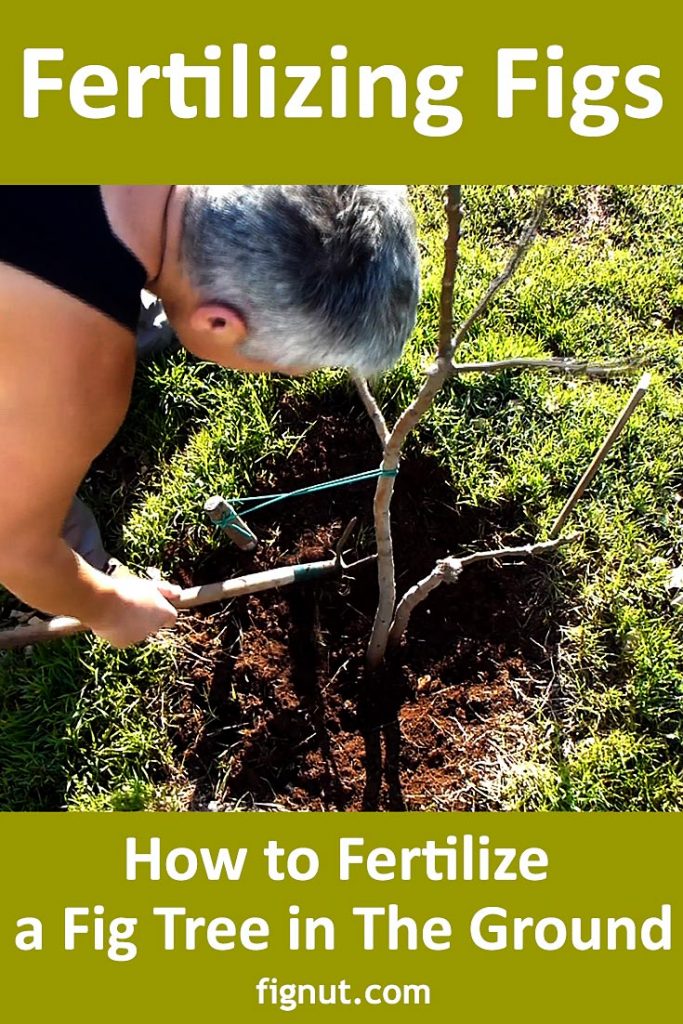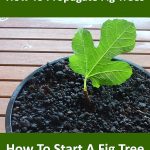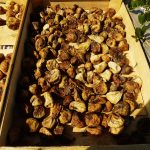Fertilizing fig trees is a vital part of growing healthy trees and should be done at least twice a year, or whenever you notice your tree needs an additional feed. Fig trees are usually fertilized in late winter or early spring and again in late summer. Your trees will be prone to diseases and will produce fewer fruits if you don’t feed them regularly with the right type of feed. In this article, I will show you when and how to fertilize fig trees in the ground and which tools to use.
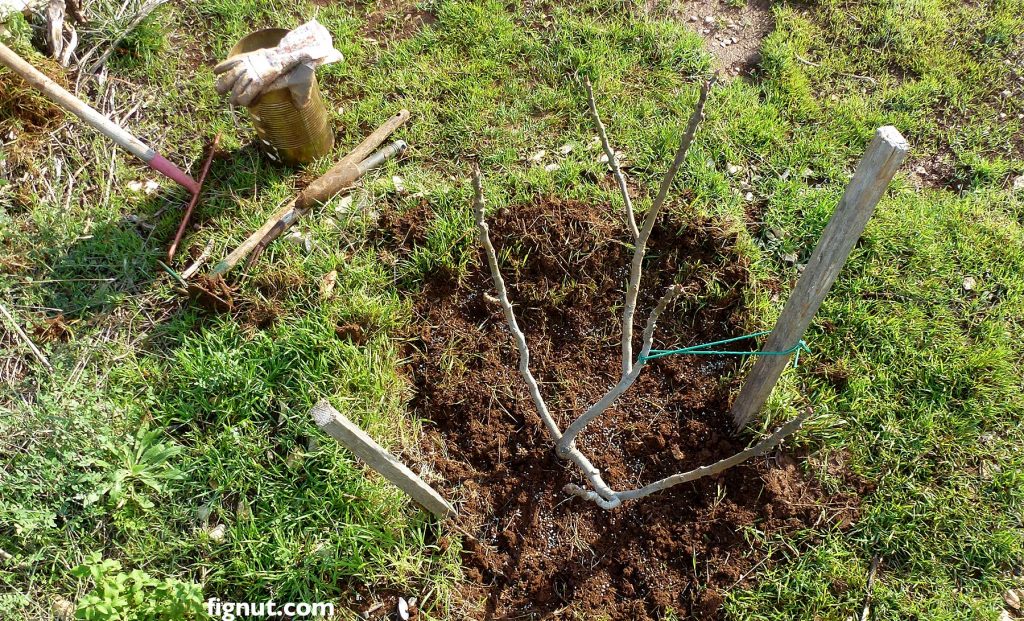
Table of Contents
When to Fertilize Fig Trees
First fertilization should be at planting time. If you are planting your fig in the ground, you should also feed it at the same time. After that, annually in late winter ot early spring feed the tree again. Do it once again in late summer when fruits are riping.
During any other parts of the year if you notice that leaves are getting yellow or dry, feed the tree again especially if your soil is lacking nutrients. As figs often need regular feedings it is a good idea to split feeding into small portions over the whole growing season. That is one of the reasons I use a granular, slow-release fertilizer, and feed my trees three times a year – in late winter, mid-spring, and mid-summer.
Fig Tree Fertilizer
There is no specific fertilizer suited just for figs. Just use general-purpose fertilizer – NPK general fertilizer (see one on the photo below), preferably granular and slow-release. Ask in your local nursery which one is recommended for fruit trees in your local area.
If you can’t get a slow-release one, or can’t get expert recommendation about your local soil, just use a general all-rounder NPK 8-8-8 or 10-10-10 (N=nitrogen, P=phosphorus, K=potassium) and feed your tree in small portions over the longer period of the growing season.
Avoid using strong fertilizers as too much feed, especially nitrogen (N) can damage the tree. It is better to use a bit every month and monitor the development than to overdo it and harm the trees. Be careful when applying to the soil as strong chemicals can harm the roots and bark of the tree.
How to Fertilize Fig Trees
Here is a step by step process which I follow to provide regular nutrients to each individual fig trees with granular fertilizers. As this was done in the early spring, tree leaves have not emerged yet:
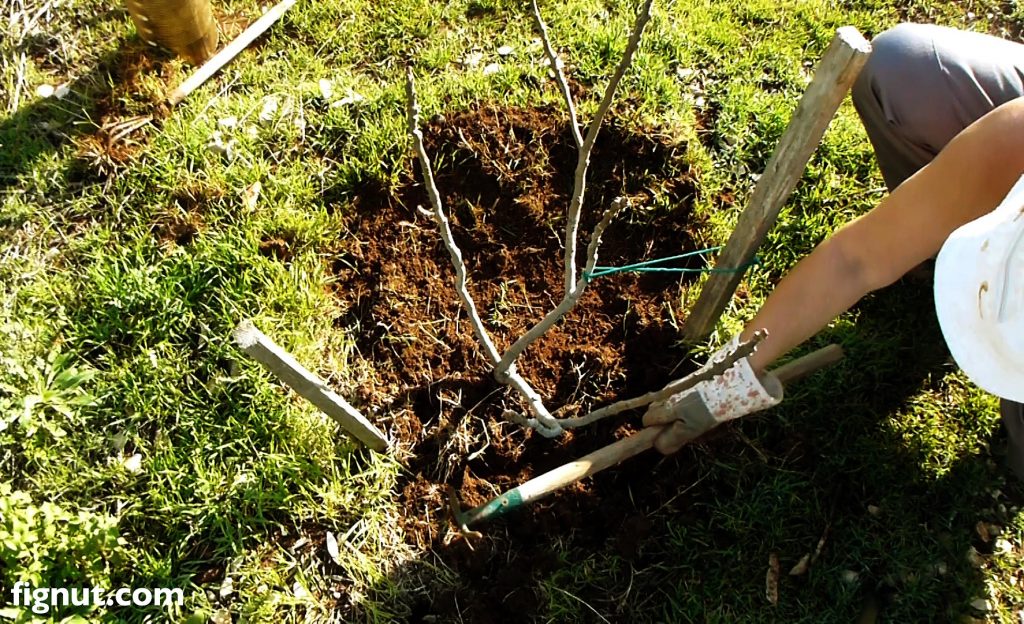
Step 1: Dig around the fig tree in the circle and clear all weeds
Dig around the fig tree in the circle (as in the above photo). The circle should cover the whole root zone which is the same size as a tree crown or canopy. So, for a small fig tree, dig a small circle, for a larger one the circle should be larger. The depth of dig should be about 5 cm. Make sure not to go any deeper as you have to avoid fertilizer touching the trunk or roots. In the below photo, you can see the size of the dug circle for larger trees. These are my two four-year-old trees after winter pruning and fertilizing.
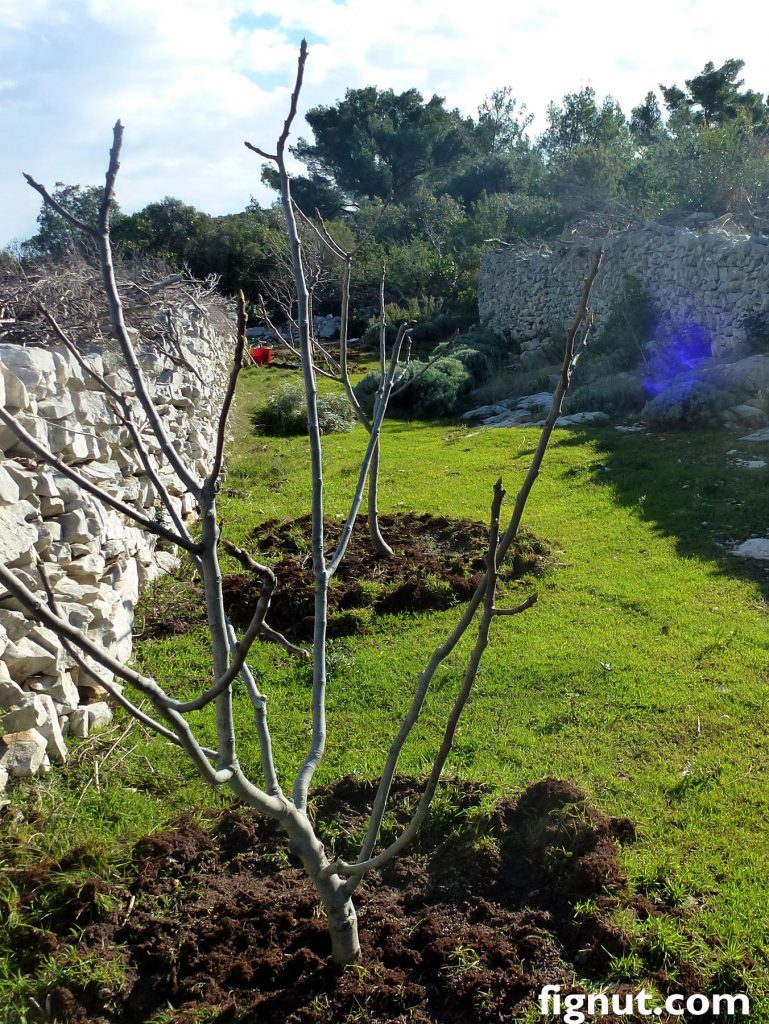
Step 2: Take granular fertilizer
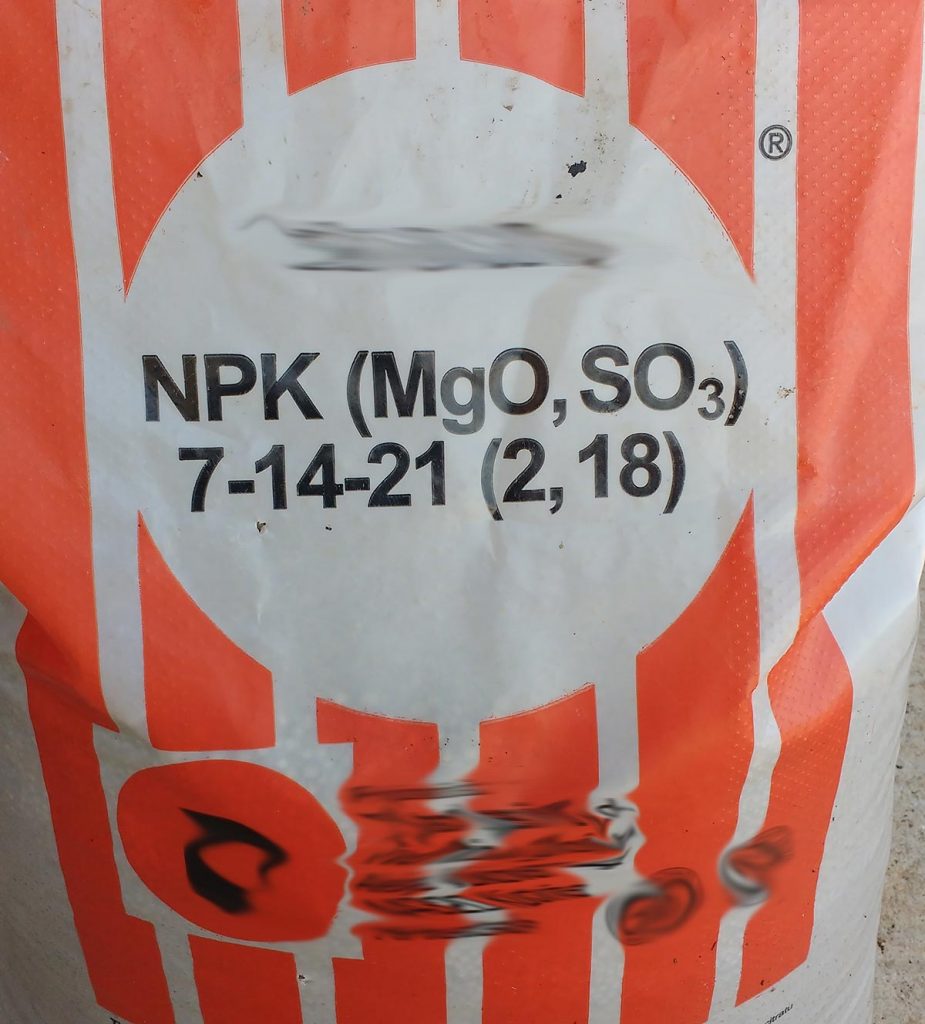
In this case, I am using NPK 7-14-21 fertilizer which was recommended to me by a local plant and tree nursery. Their recommendation is based on the conditions of the soil in my local area. Besides general NPK (N=nitrogen, P=phosphorus, K=potassium) it also contains some additional slow-release nutrients specific to the needs of fruit trees in my local area. They will all become available to feed the tree over time. During the rain or while watering or irrigating, the granules will slowly dissolve while releasing feed into the ground for roots to feed on.
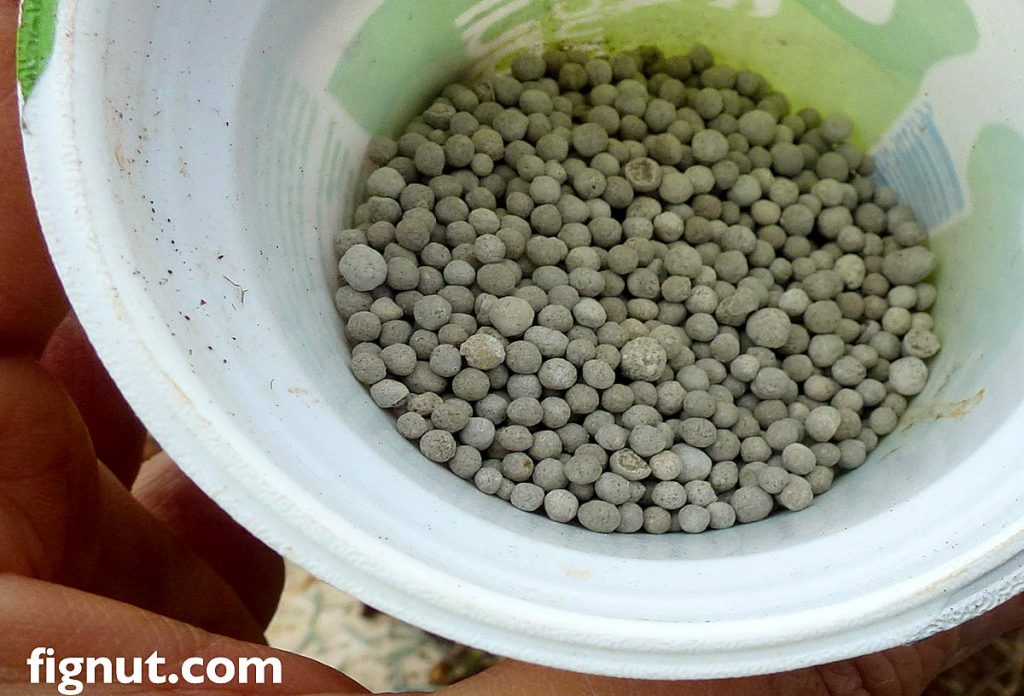
Step 3: Apply fertilizer
Take a small cup or pot (in the above photo I am using a clean 200 ml yogurt pot) and fill it with granules up to half of the pot, about 100 ml. Spread it evenly around the whole tree all the way to the edges of the cleared/dug area. In the below photo, you can see the dug and feed area corresponds with the size of the tree. Make sure the granules don’t drop too close to the tree trunk as it may damage the bark. Keep them at least 5 to 10 cm away from the trunk of the tree. If by accident, any granule drops close to the trunk, push it away immediately.
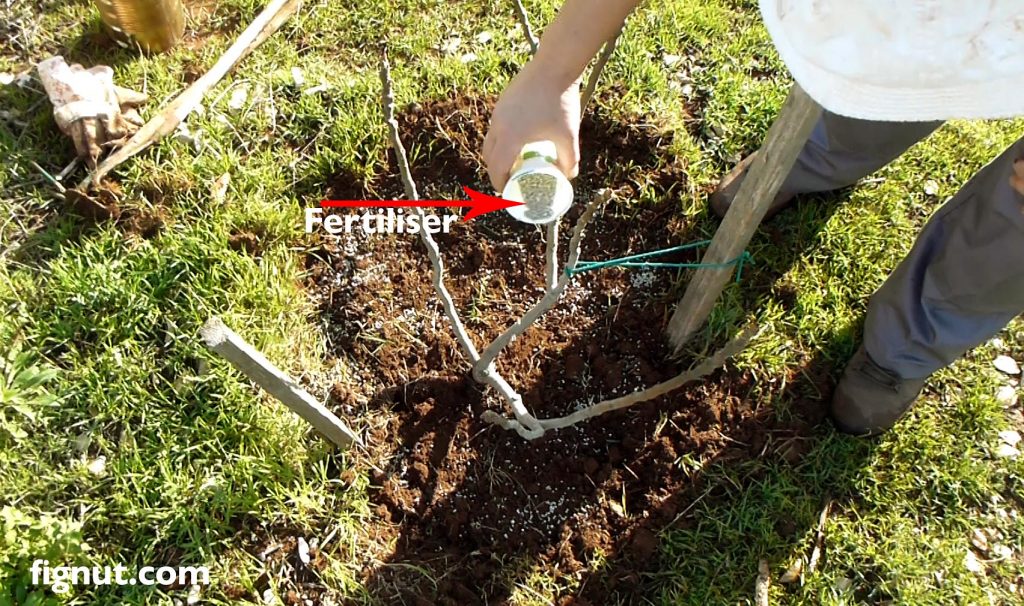
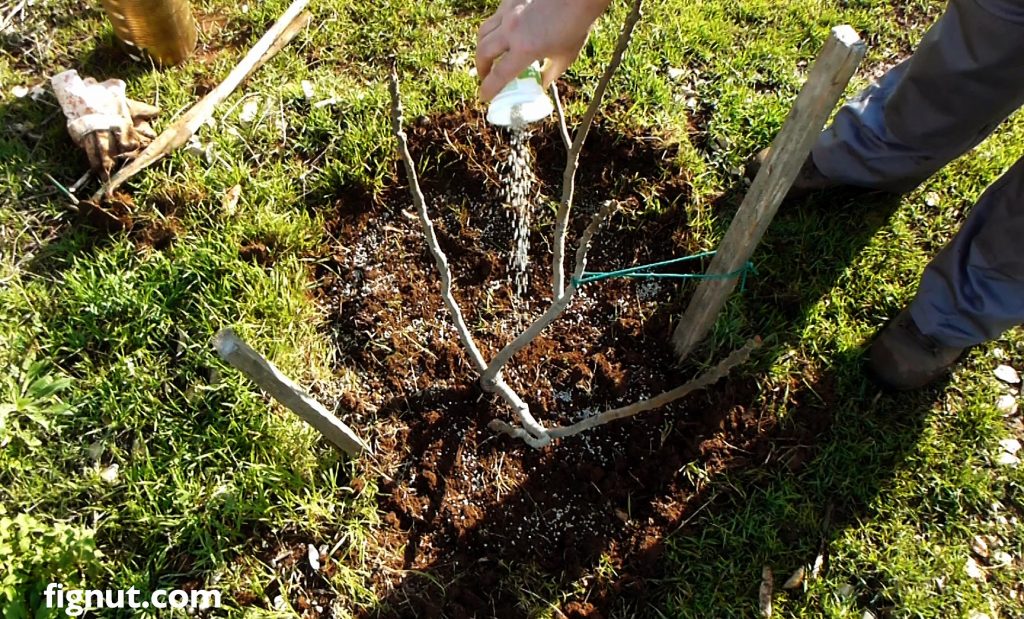
Step 4: Cover fertilizer granules with soil and water them well
Carefully and thoroughly cover all fertilizer granules with the soil while making sure they remain about 5 cm deep. Double-check if any of the granules touch the tree trunk or fig roots. Gently water the whole area, preferably with a watering can. Avoid granules spreading further or washing away.
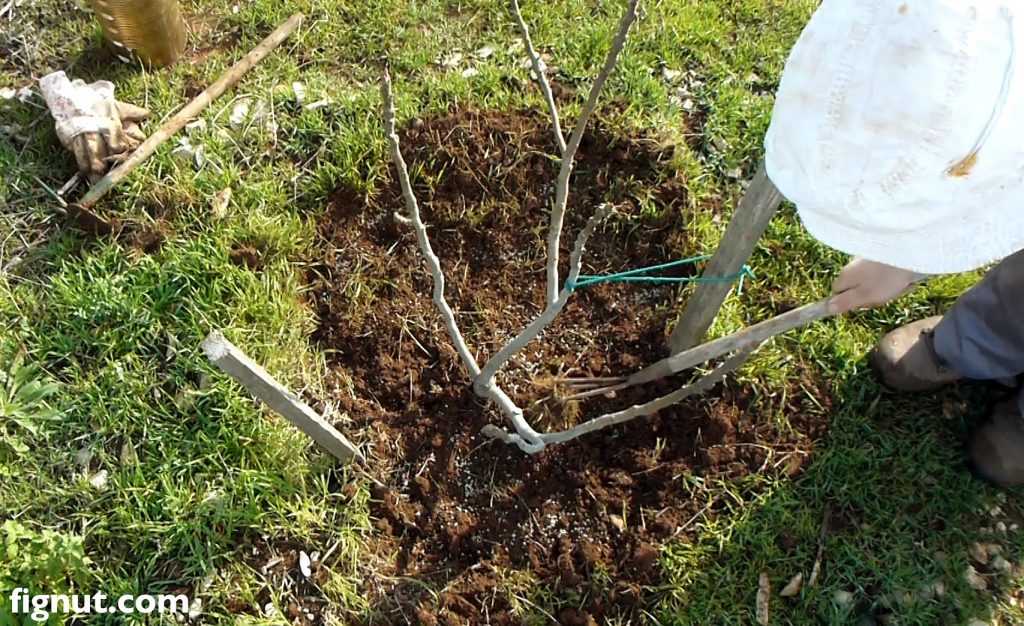
Important things to remember when fertilizing
- If you are living in a cold climate, avoid fertilizing your tree during the frost season as fertilizer can stimulate premature growth, and newly grown leaves and branches may end up getting frostbites. Leave fertilizing for early spring, just at the time when first leaves are expected to emerge.
- If you over-fertilize, you may initiate the foliage growth instead of fruit ripening so do it in small portions, just light application
- Make sure you wash your hands well after using any chemicals including industrially made fertilizers
- Always follow the instructions that are written on the fertilizer package.
Tools
You just need simple gardening tools: a pair of gloves, hand trowel, rake, fork and watering can.
Video
Here is a short video of me fertilising the two year old baby fig tree in dormant period (early spring):
And another video of me fertilizing a 3-year-old tree on the cold late winter day:
Homemade fertilizer for a fig tree
Besides this general feed, I do my own fertilizer for my trees -> I use banana peels and leave them around the tree trunks of all my trees (you can see it here near my almond tree) where they decompose and dissolve while making the ground more fertile. I apply banana peels all year round.
I also do liquid fertilizer tea made from onion and garlic peels which besides fertilizing acts as an insect repellent. This is particularly important to do in summers when a lot of insects (such as grasshopper) and pests are attacking young leaves and fruits.
